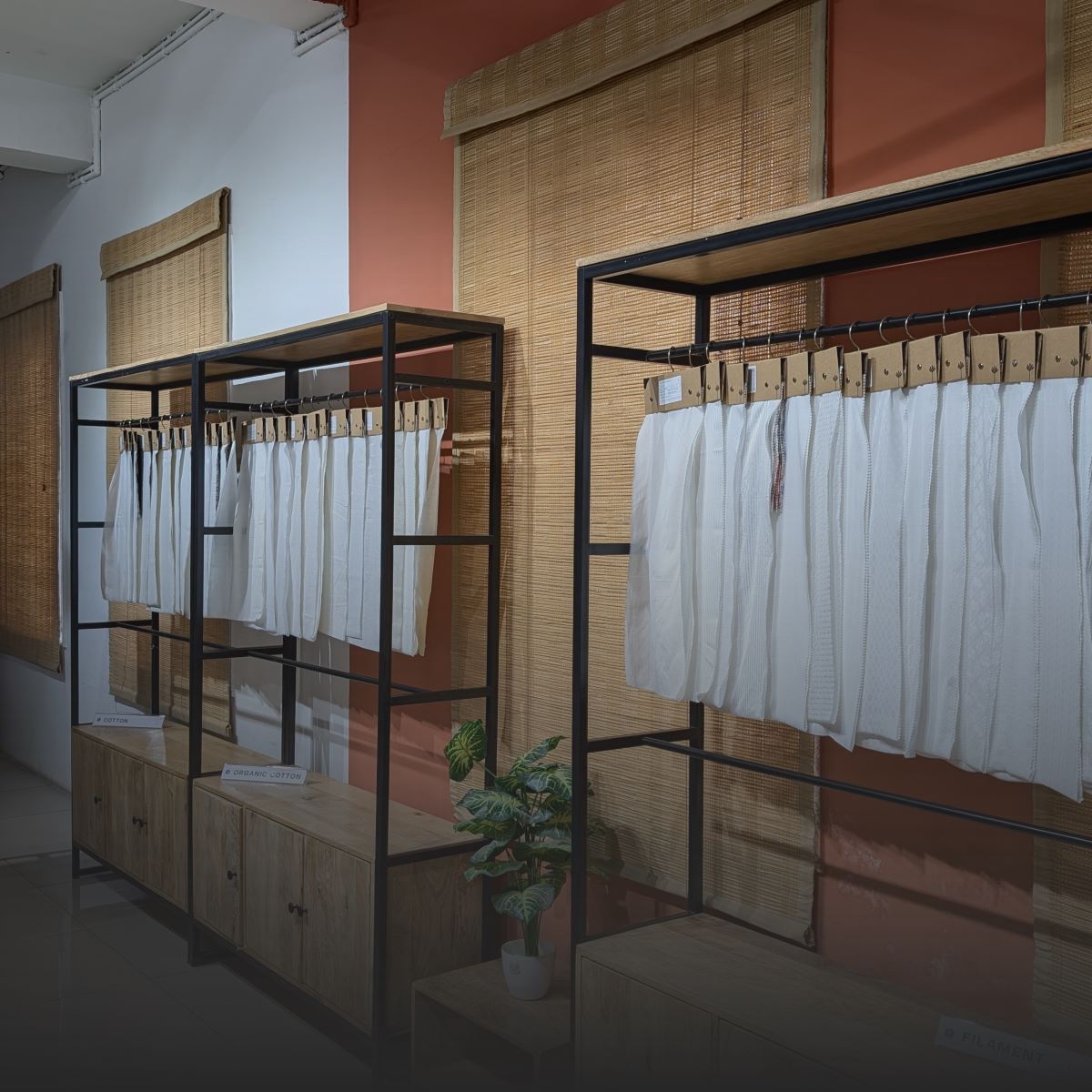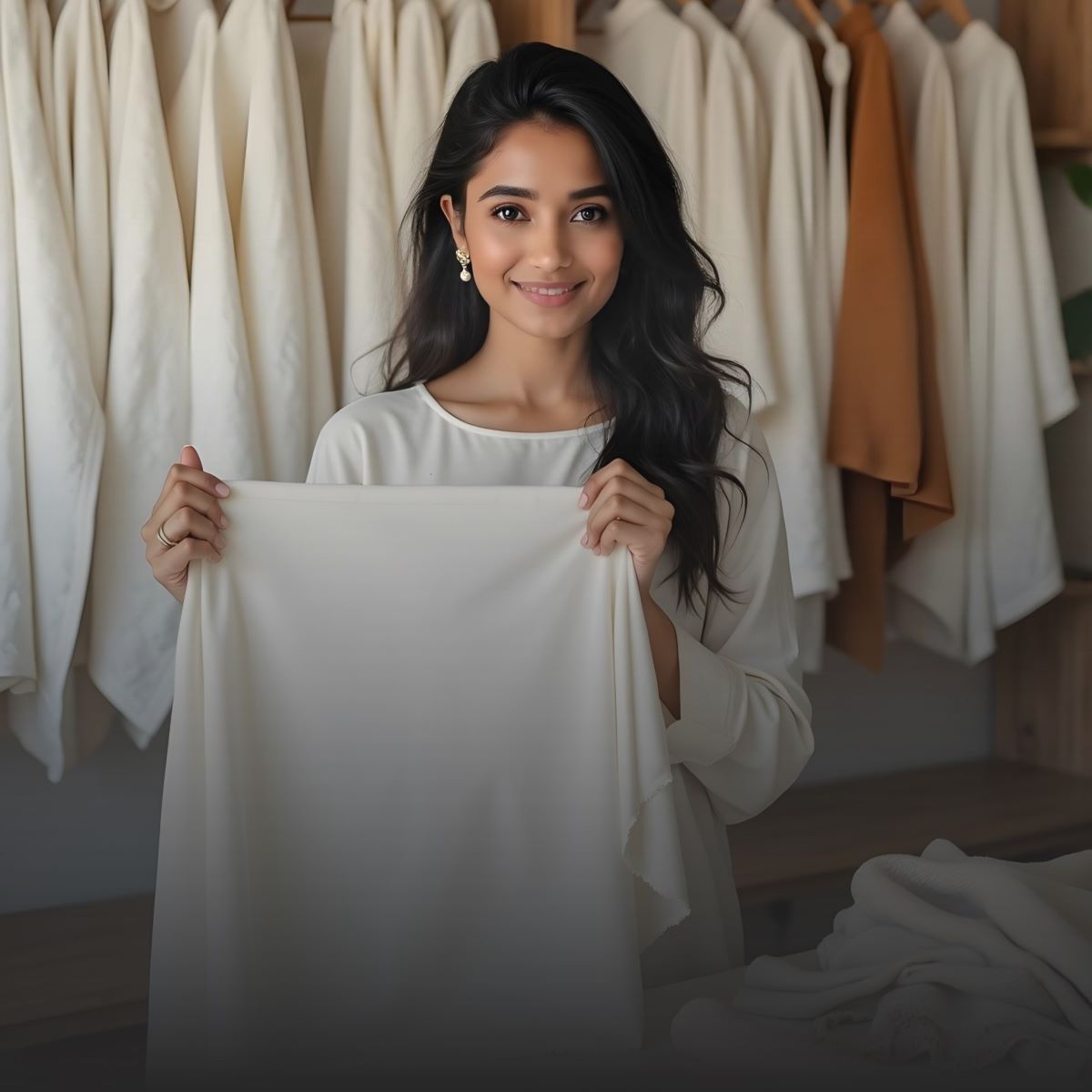Sustainability is no longer just a popular term in the fashion world; it's rapidly becoming the defining trend of our time. U.S. designers are leading this change by using sustainable fabrics to reduce their environmental impact. This shift also drives fashion innovation. Consumers are demanding eco-friendly materials more than ever and ethical shopping habits are on the rise. This trend seamlessly blends style with sustainability.
The fashion industry has long been a major contributor to environmental degradation. According to the Ellen MacArthur Foundation, the fashion sector accounts for 2-8% of global carbon emissions and consumes vast amounts of water, equivalent to 215 trillion liters annually (Quantis, 2018). In addition, fast fashion contributes significantly to textile waste, with 85% of garments ending up in landfills each year (UNECE, 2018). As awareness of these environmental challenges grows, U.S. designers are embracing sustainable fabrics as a way to combat these issues and redefine what it means to be stylish.
In this blog, we'll explore how U.S. designers are incorporating sustainable fabrics into their collections, from organic cotton and Tencel to hemp and recycled polyester. We’ll look at how these materials are not only helping reduce the fashion industry's environmental footprint but also setting trends that are shaping the future of fashion.
The Environmental Cost of Fashion: Why the Industry Needs Change
Water Consumption and Pollution:
The fashion industry is responsible for using around 215 trillion liters of water annually, much of which is polluted by toxic chemicals during the dyeing and finishing processes (Quantis, 2018). The textile sector accounts for 20% of global industrial water pollution (World Bank, 2020).
Carbon Emissions:
Fashion contributes to 2-8% of global carbon emissions and if current trends continue, that share could increase to 26% by 2050 (Ellen MacArthur Foundation, 2017). These emissions stem from energy-intensive production, transportation and waste disposal processes.
Waste and Landfill Overflow:
An estimated 85% of textiles end up in landfills each year (UNECE, 2018), with many garments made of nonbiodegradable synthetics. This overconsumption leads to massive waste and resource loss.
Microplastic Pollution:
Washing synthetic fabrics releases microplastics into the oceans, about 500,000 tons annually, the equivalent of 50 billion plastic bottles (Ellen MacArthur Foundation, 2017).
Social Costs:
Fast fashion’s reliance on cheap labor in developing countries often results in poor working conditions, unfair wages and exposure to harmful chemicals, raising serious ethical concerns (UNEP, 2018).
These alarming statistics highlight the urgent need for change in the industry. To mitigate these impacts, U.S. designers are embracing more sustainable practices, marking a shift toward greener fashion solutions.
The Shift to Sustainable Fabrics: What’s Driving U.S. Designers?
U.S. designers are increasingly turning to sustainable fabrics, influenced by several key factors that are reshaping the fashion industry. These factors not only align with ethical values but also offer practical benefits in terms of cost, innovation and consumer demand.
Consumer Demand for Ethical Fashion:
Consumers are increasingly aware of how their purchases impact the environment and society. A 2020 survey showed that 66% of consumers worldwide would spend more on sustainable brands (Nielsen, 2020). Consumers are changing how they think. This shift urges designers and brands to use ethical and eco-friendly materials. As a result, the demand for sustainable fabrics is growing.
Increasing Regulations and Industry Standards:
As environmental issues continue to rise, governments and international organizations are introducing stricter regulations on textile waste, water use and carbon emissions. U.S. designers are compelled to adopt sustainable practices to comply with these regulations and avoid penalties. For example, the Fashion Industry Charter for Climate Action, supported by the United Nations, encourages brands to cut carbon emissions and promote transparency.
Advances in Textile Technology:
Innovations in sustainable textiles, such as bio-based fabrics and recycled fibers, are making eco-friendly options more accessible and cost-effective. Materials like Tencel, organic cotton and recycled polyester offer the same quality and durability as conventional fabrics but with far less environmental impact. These innovations make it easier for designers to create stylish, sustainable collections without compromising performance.
Long-Term Cost Benefits:
While sustainable fabrics can be more expensive upfront, they offer significant long-term savings. Designers can use durable, eco-friendly materials. This helps reduce waste. It also cuts costs linked to overconsumption. Plus, it meets consumer demand for sustainable fashion. Using these fabrics helps brands get ready for resource shortages and stricter rules.
Together, these factors are driving U.S. designers to embrace sustainable fabrics and set trends that will shape the future of fashion for years to come.
How U.S. Designers Are Using Sustainable Fabrics to Set Trends
U.S. designers increasingly lead the charge toward sustainable fashion by incorporating eco-friendly fabrics into their collections. These designers show that sustainability doesn’t have to come at the cost of style and they set new standards that blend ethics with innovation.
Eco-Friendly Fabrics on the Rise
U.S. designers often use popular sustainable fabrics like organic cotton, Tencel, hemp and recycled polyester. Organic cotton is popular for its soft texture. It’s grown without synthetic pesticides or fertilizers, making it eco-friendly. Tencel comes from sustainably sourced wood pulp. It's known for its silky feel and biodegradability. Hemp is also becoming popular. It is durable and needs little water to grow. Recycled polyester comes from used plastic bottles. It helps tackle the plastic waste issue. Plus, it’s a strong and eco-friendly choice compared to regular polyester.
Stella McCartney: A Pioneer in Sustainable Fashion
Stella McCartney has long been a leader in sustainable fashion, integrating eco-friendly fabrics into her collections while maintaining high-end aesthetics. Her brand uses organic cotton, recycled fabrics and other sustainable materials to create luxury designs without compromising on quality. McCartney has even gone as far as launching the “Stella McCartney Cares” program, aimed at promoting ethical practices across the fashion industry.
Patagonia: Combining Performance with Sustainability
Patagonia is a great example of U.S. designers using sustainable fabrics. They focus on environmental sustainability. The brand makes outdoor apparel using recycled polyester, organic cotton and wool. It is committed to being transparent about its supply chain. Patagonia works hard to lower its environmental impact. It also inspires shoppers to think carefully about their choices.
Reformation: Sustainable Chic for the Modern Woman
Reformation is a U.S.-based brand that has gained popularity for its use of sustainable fabrics, from organic cotton to recycled polyester. By designing stylish, on-trend pieces made from eco-friendly materials, Reformation proves that sustainable fashion can be both fashionable and sustainable. The brand’s commitment to transparency is evident in its RefScale, which details the environmental impact of every piece of clothing they produce.
Challenges and Solutions in Sustainable Design:
|
Challenges |
Solutions |
|
Sourcing Sustainable Materials
|
|
|
Higher Production Costs
|
|
|
Educating Consumers
|
|
|
Upcycled Fabrics and Innovative Partnerships
|
|
|
Leveraging Technology for Efficiency
|
|
The Future of Sustainable Fashion: What’s Next?
|
Trends in Sustainable Fashion |
Description |
|
Mainstream Adoption of Sustainable Practices |
Sustainability will be key for brands, big and small, from fast fashion to luxury. Consumer demand for ethical and eco-friendly fashion will drive industry-wide change. |
|
The Rise of Circular Fashion |
Circular fashion will promote reuse, recycling and upcycling. Rental fashion, second-hand shopping and clothing swaps will gain popularity. Brands will design garments for longevity and recyclability. |
|
Innovations in Sustainable Textiles |
New eco-friendly fabrics will change fashion. These include bio-based materials, algae fibers and plant-based leather. Sustainable textiles like Pinatex (pineapple leather) and mushroom leather will go mainstream. |
|
Integration of Technology in Fashion Design |
3D knitting, digital fabric printing and AI-driven sustainable production reduce waste and improve efficiency. Smart fabrics and digital fashion innovations will reduce resource consumption. |
|
Policy and Regulatory Impact |
Governments will enforce tougher rules on carbon emissions, waste management and ethical sourcing. Brands will need to follow sustainability standards. |
|
Empowering Consumers with Knowledge |
Digital tools, apps and transparency initiatives help consumers choose sustainable fashion wisely. Brands will provide supply chain transparency and ethical sourcing details. |
|
Sustainable Fashion Beyond the Runway |
The eco-conscious design will expand beyond luxury fashion to everyday wear, activewear and footwear. Fast fashion brands will integrate sustainable practices, making ethical fashion more affordable. |
Conclusion
Sustainable fashion is on the rise. More U.S. designers are using eco-friendly materials. These include organic cotton fabric, hemp and recycled polyester fabric. These materials help protect the environment while creating stylish and high-quality clothing. New ideas and technology are helping to produce sustainable fashion. There are challenges, like higher costs and limited supply, but these innovations make a difference. More people are choosing eco-friendly options. Because of this, the fashion industry is improving. Sustainable clothing is now part of everyday life.
FAQ’s
1. What are designers currently using to be sustainable in the fashion industry?
Designers are adopting organic cotton, cupro, linen, Tencel, and bamboo fabrics, along with zero-waste cutting, upcycling, and ethical sourcing to reduce environmental impact.
2. What are the four most common sustainable practices in fashion manufacturing?
- Eco-friendly fabrics: Organic cotton, hemp, recycled polyester.
- Water AND energy conservation: Low-water dyeing, solar-powered production.
- Ethical labor practices: Fair wages, safe working conditions.
- Waste reduction: Zero-waste cutting, upcycling and circular fashion.
3. What is the demand for sustainable fabrics?
The global demand for sustainable fabrics is growing at 8% CAGR, driven by eco-conscious consumers and brands investing in organic, recycled and biodegradable textiles.
4. Why should all fashion designers start using sustainable materials?
Sustainable fabrics reduce environmental impact, support ethical production, and attract eco-conscious consumers, making them essential for a responsible and future-ready fashion industry.
If you are searching for wholesale fabric suppliers in the U.S. market, you can now visit Fabriclore.com




